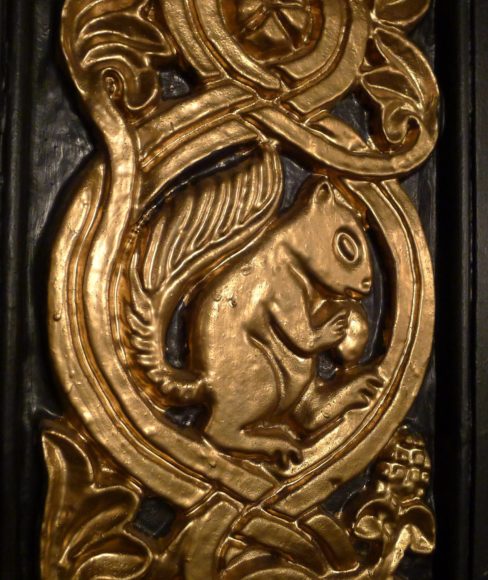“There’s only two theaters, man… that are set up pretty groovy all around for music and for smooth stage changes, good lighting and all that — the Fillmore and The Capitol Theatre.” — Jerry Garcia, The Grateful Dead
Bob Dylan played there. So have The Rolling Stones, David Bowie, Eric Clapton, Chuck Berry, The Grateful Dead, Black Sabbath and Janis Joplin, who wrote “Mercedes Benz” at an adjacent bar between gigs there, then debuted the song later that night at the second show — the penultimate performance of her tragic, young life.
We’re talking about “The Cap” as The Capitol Theatre in Port Chester is affectionately known. Designed by Thomas W. Lamb — a king of the lavish, early 20th-century theaters known as movie palaces — The Capitol Theatre opened on Aug. 18, 1926 with “the only theater refrigerating system in Westchester County,” a 10-piece orchestra that played “The Star-Spangled Banner” and a sold-out screening of “Sea Wolf,” for which 2,000 lucky patrons paid a nickel, while hundreds were turned away.
But it was as a temple of rock ’n’ roll in the late 1960s and early ’70s that the venue made its bones. You don’t get to be a 95-year-old legend, however, without a varied history and several face-lifts. Renovated as a psychedelic performance space in the ’60s, The Cap became a live theater venue in 1984 — the year it was added to the National Register of Historic Places — under developer Marvin Ravikoff and a banquet hall in 1997 still with some rock performances, perhaps most notably The Rolling Stones live on MTV’s “Ten Spot” on Oct. 25 of that year.
With Peter Shapiro, owner of the Brooklyn Bowl in Williamsburg, at the helm in a new century, The Capitol Theatre has come full circle as a concert/event space, with state-of-the-art light, sound and video systems; new carpets; upgraded bathrooms; repainted walls that feature tiny portraits of Mick Jagger and other boldface names that have graced the stage; and Dylan headlining the 2012 reopening.
So it’s no surprise to learn that The Cap has not only survived an 18-month pandemic shutdown but is thriving with a full slate of concerts that includes Sheryl Crow, Billy Idol, Brian Wilson, founding Grateful Dead member Phil Lesh, Elvis Costello, Foreigner, Frankie Valli and The Beach Boys, among others; as well as plans for more renovations.
Talk of those spring renovations is premature, General Manager Bruce Wheeler says as we sit at the generous bar of Garcia’s, the lobby venue named for Jerry, of course, that hosts intimate concerts and events. What Wheeler is eager to talk about — and the reason press and patrons alike have gathered on the kind of rainy late-summer day that defined the whole season — are the tiles on the entrance floor that became a vital part of keeping The Cap afloat during the pandemic.
For $450, fans can still “adopt” one of the 400-plus tiles and have it inscribed with their names or messages and favorite Cap shows. Head usher Brian Lynch, who takes the press on a nostalgic tour of the theater, says his tile is inscribed with The Rolling Stones’ concert.
“Standing a few feet away from Mick Jagger is something I’ll never forget,” he says. (Eighty percent of The Cap’s performances are general admission — standing room only in the orchestra with seats in the loge and balcony. The rest of the concerts have full seating, with a total capacity of 1,600.) Merchandise that commemorates historic performances or the 95th anniversary captured in a design based on the theater’s elaborate scrollwork was the second of the three prongs in The Cap’s pandemic survival plan. But perhaps the most important part was — and is — ticket sales. While the theater was closed during the pandemic’s height, it streamed performances.
“Performers are paid a guarantee that is negotiated as a part of the contract and derived from ticket sales,” Wheeler says. “They could also earn a bonus depending on the agreement for that show, usually based on very strong sales or the show selling out.”
All this, along with government loans, kept the theater going. Still, Wheeler says he had to furlough 90 percent of the staff, which includes 15 full-time employees and 85 to 90 people who work shows and events, everyone from stagehands to bartenders.
Now it’s all hands on deck not only for concerts that are also sound-and-light spectaculars but for weddings, bar and bat mitzvahs and business conferences. (One 50th birthday party featured a band from every decade, says Emily Schmalholz, director of special events.) Party planners can take advantage of Garcia’s intimacy and the majesty of the theater itself, whose mezzanine bar mirrors turn into screens streaming the concert and simultaneously sporting events like the World Series.
For those coming to the theater, parking remains something of a challenge, as it does everywhere in constantly evolving Westchester County. The theater has two lots that hold a combined 80 vehicles. Otherwise, it and patrons rely on street parking.
Still, touring the theater and getting a taste of its pyrotechnics — which bring the present and the future together with the past — imbue you with a sense of both its history and possibilities.
Hey, it’s hard to argue with a legend.
For more, visit thecapitoltheatre.com.







